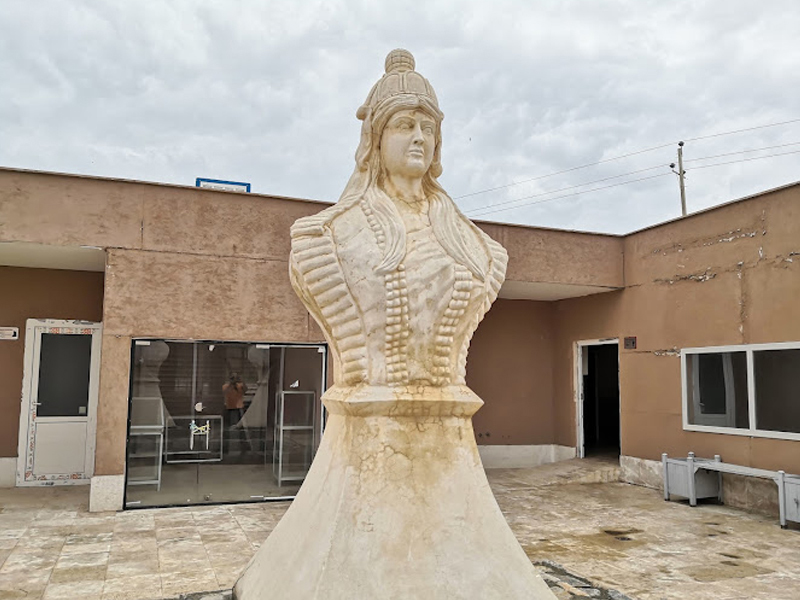Anahita Temple is located in the city of Kangavar, Kermanshah Province, Iran. This city is situated along the historical route of the Hecatompylos Tisfun. Anahita Temple was registered as one of Iran’s earliest national heritage sites on September 24, 1951, with registration number 31 in the National Heritage List of Iran. It is the second-largest stone structure in the country after Persepolis. The history of this valuable building is traced back to three periods: the Achaemenids, the Arsacids, and the Sassanids, based on historical writings and documents. While some believe that this temple was built to worship the goddess of water, others describe it as a semi-complete palace belonging to Khosrow Parviz. Anahita Temple is located in the heart of Kangavar, one of the cities of Kermanshah Province.
Today, the Hamedan-Kermanshah road passes through the western side of the temple complex. The distance from the Anahita Temple to Kermanshah City is approximately 94 kilometers. In this article from Eligasht, we will embark on a journey to explore the Temple of Anahita, uncover its historical significance, and delve into the mysteries surrounding this revered deity.
Book Iran Air flights from London to Tehran and Tehran to London with Eligasht UK:
Anahita Temple, Symbol of the Goddess of Water in ancient Iran
Anahita was one of the most important ancient deities in Iranian culture and is known as the “Goddess of Waters” in Iranian mythology. She was one of the most revered deities in ancient Iran and various mythologies worldwide have chosen diverse deities to control water and similar elements. The name Anahita was written and pronounced as “Ardwisur Anahid” in ancient Persian. In Middle Persian, her name was mentioned as “Ardwisur-Anahid,” and in modern Persian, she is also referred to as “Anahid.” In the book “Bundahishn,” which is one of the most important religious texts for the Zoroastrian religion, the term “Ardwisur-Anahita” is sometimes used independently. This is because “Ardwisur” signifies water, and “Anahid” signifies “star Venus.”
According to the content found in Iranian mythological books, all the seas and lakes originated from “Ardwisur,” and all the stars were born from “Anahid.” Water is a fundamental symbol in various cultures, representing concepts such as life, fertility, vitality, and the flow of life. The myth of Anahita precisely portrays these concepts and she was known as a symbol of life and beauty. Over time, more attention was given to Anahita, and she was recognized as one of the goddesses of beauty in ancient Iranian culture. In some periods of history, she was even compared to the goddess of beauty (Aphrodite) in ancient Greece.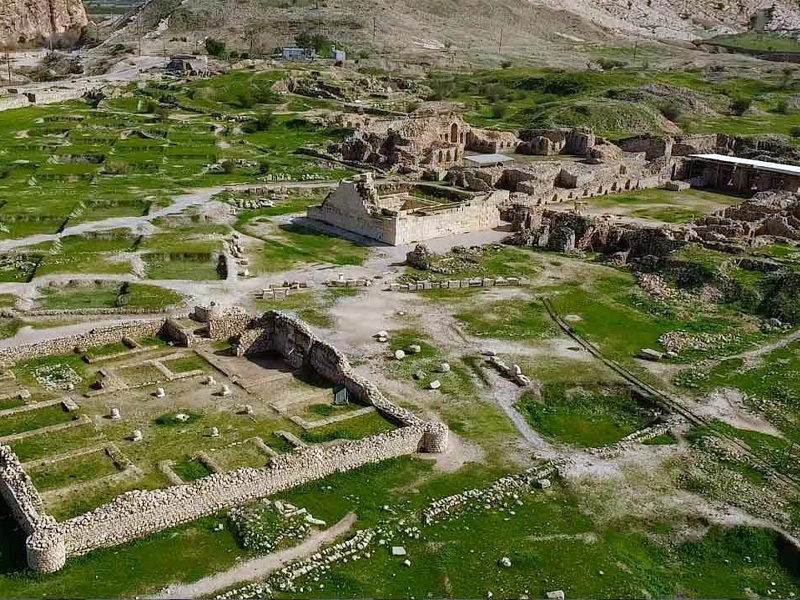
The Temple of Anahita, located in the highlands near the Kangavar plain, is one of the great stone temples of Iran that has attracted attention in the past due to its architectural techniques and has been inspired by it. The Anahita Temple is known as a place of reverence and worship for Anahita, a goddess associated with the protection of springs and rain. Some consider this temple to be an unfinished palace for Khosrow Parviz, the Sasanian king.
Position of the Anahita Temple in Iran
The Temple of Anahita, which was registered as one of Iran’s national historical monuments in 1310, has lost some of its past splendor due to neglect and disregard for the serious damages it has suffered. In 1336, this temple also suffered serious damage due to an earthquake and lack of necessary care. This damage is such that the roles and inscriptions on the stones and columns of the temple are noticeable.
The Beauties around the Temple of Anahita
In the vicinity of the Anahita Temple, there is an Imamzadeh (a holy shrine) and a mosque that have been revered as sacred places by the people of Iran from the past to the present. Additionally, two kilometers away from the Anahita Temple, there is the Chelmaran Stone Mine, from which the massive stones of the Anahita Temple were extracted. In ancient times, Anahita was known as the guardian of water and a high-ranking deity associated with beauty and fertility. The Anahita Temple was built to honor the goddess of water in ancient Iran, and its origins date back to centuries before the Common Era. The first stone structure of the temple was built during the Achaemenid period, and its construction continued in subsequent periods and ended during the Sasanian era.
Some researchers have identified this structure as an unfinished palace for Khosrow Parviz, while others have attributed its construction to various periods before the Common Era. Saifullah Kambakhshfard has divided its construction into three periods: Achaemenid, Parthian, and Sasanian. There are valleys around the Anahita Temple that direct water streams towards the center of the temple.
Other Parts of the Temple
On top of this place, there is a sculpture of four bulls facing each other, and during the water collection, the image of the bulls’ heads is reflected on the water. In the center of the Anahita Temple, there is a space where water is collected from the streams, filling a small pool of about 10 by 10 meters and a depth of 20 centimeters. This temple is the most famous temple attributed to Anahita in Kangavar, Iran. The walls are adorned with columns of large diameter, with the height of these columns being three times their diameter, which is one of the interesting and unique features of the design and architecture of the Anahita Temple. Stone and gypsum mortar have been used in the construction of the walls, and carved stone pieces have decorated its exterior in a dry masonry style.
The architecture of the Anahita temple walls
The architecture of Anahita Temple has various perspectives and interpretations that have been presented by European Orientalists and Iranian archaeologists. According to historical sources, the first individuals to study the architecture of Anahita Temple were Eugene Flandin and Pascal Coste, European Orientalists, who presented very detailed plans during their travels to Kangavar. They believed that the architectural style of Anahita Temple was based on the Greeks.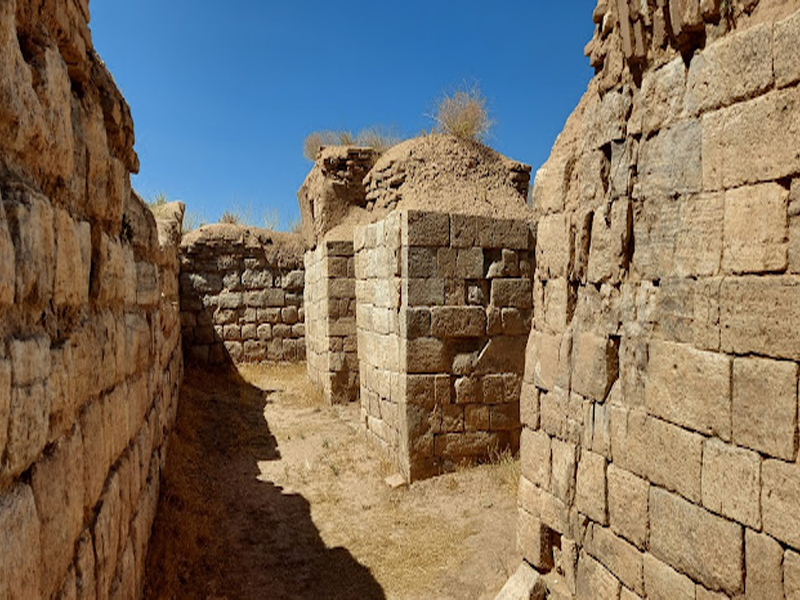
These two Orientalists proposed a design for the Anahita Temple by comparing it with the architecture of the Palmyra Temple in Syria. European research also shows that during the rule of the Achaemenids and the Parthians, there were cultural exchanges between Iran and Greece, and based on that, buildings in the Greek architectural style were constructed in Iran. Kangavar, located near the western borders of Iran, is one of the cities that received the most influence from Greek architecture. Therefore, the construction of Anahita Temple was carried out based on the Achaemenid architectural style, and the columns of the structure were designed with inspiration from Greek architecture. On the other hand, Iranian archaeologists have claimed that the imitation of the architectural pattern of the vast Kangavar complex or Anahita Temple is not correct according to Western and European Orientalists and archaeologists.
For example, historical structures in Iran such as Takht-e Jamshid (Persepolis), Firuzabad Castle of the Sassanid period, and Khajeh Mountain are examples of the authentic Iranian architectural identity. It seems that the method used in the construction of the platforms bears a great resemblance to the bases and foundations of ancient Iranian royal palaces. As an example, the Khosrow Palace in Qasr-e Shirin, the combination of the Nahid platform and its similarity to the Farhad Throne in Bisotun, and the Sarmaj platform are prominent examples of the style of platform construction.
Related post
Travel to Kermanshah: Everything You Need to Know Before Your Trip!
Bisotun Historical Site, a UNESCO World Heritage Site
Different parts
The walls around the building
To unify the structure with the rocky base on which the Temple of Anahita was built, architects and builders used stone blocks and a mixture of gypsum and mortar. This resulted in the creation of a platform with a thickness of 18 meters (except for the northern side) around it. On this platform, slender columns were placed, which were responsible for guarding the goddess of water.
Entrance Stairs
On the southern side of the building, there were two-sided staircases that were 154 meters long and each consisted of five steps in a stone block. These staircases led to the highest level, which was a moon-shaped platform parallel to the main platform of the Temple of Anahita, without columns. The staircase on the eastern side had 26 stones, and the staircase on the western side had 21 stones. During the Islamic periods, the staircases were covered with bricks for the convenience of horse movement, which protected and preserved their quality. There are no positions for shooting on the stairs, and like other parts, they are plain and undecorated. In addition to the entrance staircases of the Temple of Anahita, there was also a staircase in the northeastern corner of the eastern side of the temple.
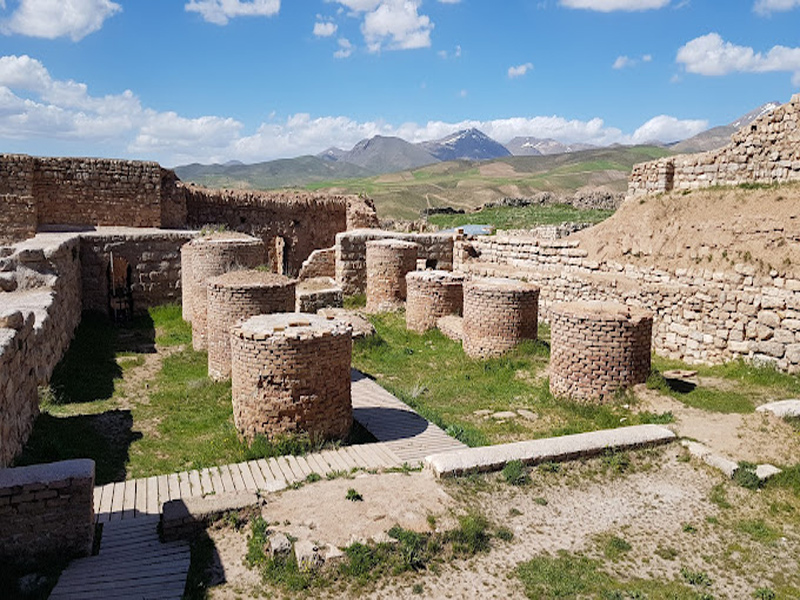
Columns
Columns were placed on the walls of the Temple of Anahita, with their height being three times their diameter. This feature is one of the interesting and unique aspects of the design and architecture of the Temple of Anahita, and it can certainly be said that none of the temples built around the world have this feature. These columns were made and placed using the methods learned by the Urartian people. The presence of these columns is an excuse for some archaeologists to attribute it to Khosrow Parviz. The columns of the Temple of Anahita consist of three parts: the base of the column, the shaft of the column (mid-column), and the capital of the column, where the height from the capital to the base of the column is one to three.
The columns of the Temple of Anahita are self-made in their simplest form, and even the fluted grooves on Greek columns cannot be seen on these columns. Some experts believe that the unique shape of the columns in the Temple of Anahita compared to other structures built in the world is because in most structures, the columns bear the weight and heaviness of the building’s roof, but in the Temple of Anahita, they are merely used to enclose the structure and define its boundaries. Additionally, due to the height of the Temple of Anahita from the ground, these columns provided shelter for the people present in the temple.
Saffeh
Inside this place, there is a stone platform called “saffeh” that extends from east to west. Its dimensions are approximately 94 meters in length, 9.30 meters in width, and three to four meters in height. This platform is made of large stone slabs, at least one side of which is smooth, and only a part of it remains in the remaining wall. Additionally, other platforms can be observed in the middle of Anahita Temple. The second platform had dimensions of approximately 11.66 by 9.42 meters when it was constructed, and its distance from the surrounding platform on the southern side was 3.87 meters. The third platform, with approximate dimensions of 5.15 by 5.12 meters, was built about 2.43 meters away from the second platform. It appears that there was a four-roomed structure on this platform, which further investigation can confirm or refute.
Final words
By visiting Anahita Temple, one can understand the importance of water in ancient times and how the ancient Iranians preserved this valuable liquid. Anahita Temple is for those who are interested in the historical past of Iran and its ancient architecture or those who are interested in myths and stories of goddesses. The Temple of Anahita stands as a testament to the ancient Persian reverence for the goddess of fertility and water. This sacred site, with its rich history and architectural beauty, offers a glimpse into the religious practices and beliefs of ancient Persia. As we continue to unravel the mysteries surrounding Anahita and her temple, it is vital to preserve and protect these cultural treasures, ensuring that their significance is appreciated and understood for generations to come.
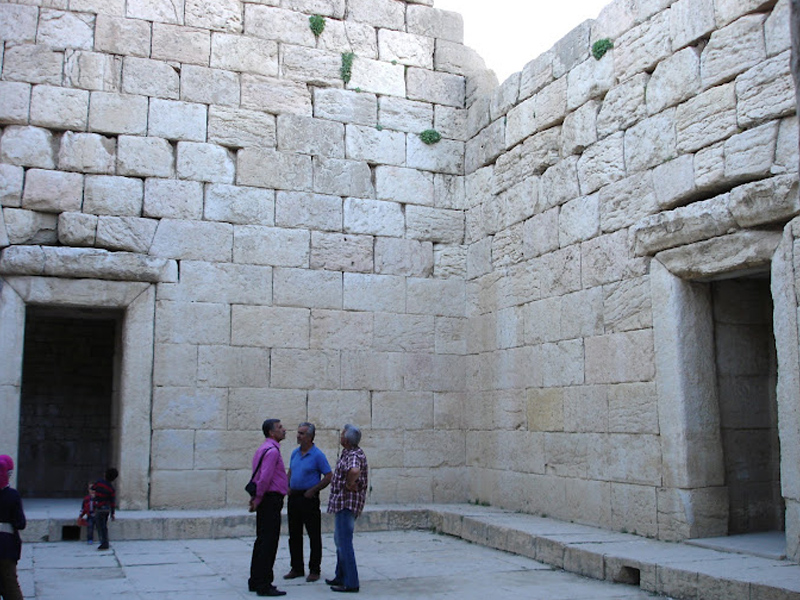
FAQ
1- What is the Anahita Temple?
The Anahita Temple is an ancient archaeological site located in Iran. It is believed to be a temple dedicated to the goddess Anahita, who was worshipped in ancient Persian mythology as the deity of fertility, water, and wisdom.
2- Where is the Temple located?
this is situated in Kangavar, a city in the Kermanshah Province of Iran. It is located approximately 45 kilometers southwest of the city of Hamedan.
3- When was the this Temple built?
The exact date of the construction of the Anahita Temple is uncertain, but it is believed to have been built during the Parthian Empire, which was from the 3rd century BCE to the 3rd century CE. Some parts of the temple may have been added or modified during subsequent periods.
